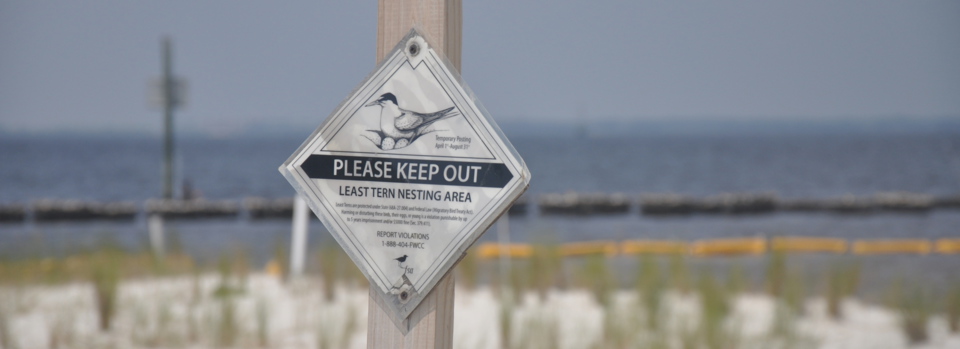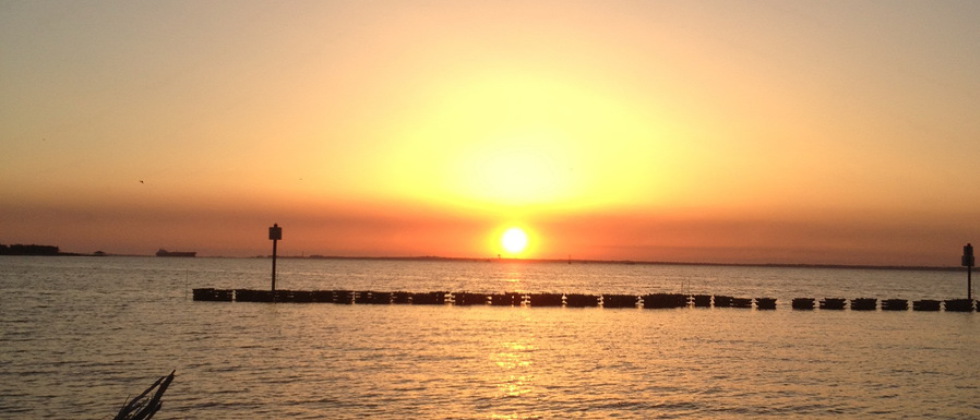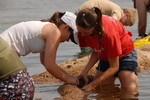



About the Project
The City of Gulf Breeze Deadman's Island Restoration project is a research site funded by the federal agencies for various environmental restoration pilot projects. Over 223 pilot projects have been funded and researched since 2007. These efforts were led by Project Manager, Heather Reed or Ecological Consulting Services. The projects serve as platform to determine transferability of restoration projects to other areas in the United States.
Deadman's Island is a unique coastal ecosystem. It is 1 of 121 Coastal Barrier Resource units within Florida and 1 in 31 out of the northwest florida. Deadman's Island is owned by the City of Gulf Breeze and is open to the public for beaches, kayaking, fishing and (with a permit from the City of Gulf Breeze ) camping. This area is everyone's private beach because it is boat access only. Only a handful of homeowners can access this beautiful area from Highpoint Drive. The City of Gulf Breeze owns all the shoreline below Highpoint Dr. and around Gilmore Bayou which prevents further development and runoff into the waterways. Leaving pristine saltmarshes and bayous.
The Deadman’s Island Restoration project addresses the loss of wildlife (aquatic and terrestrial) habitat due to the impact of hardening developmental activities.
Seven acres of salt marsh destroyed by erosion due to the erection of seawalls, bridge construction and dredging activities. This development, according to coastal engineers, created a deficit in the
sediment budget of the transport of littoral sand needed to renourish the area. Renourishment and protection were needed to protect an unmarked cemetery several shipwrecks, a ten thousand year
old salt marsh, marine oak hammock community and unique coastal barrier ecosystem habitat. This unique area and bird sanctuary is in jeopardy of being destroyed. The Marine Oak Hammock
community, which contain several species of oaks, which is very rare ecosystem throughout the State of Florida. Due to development activities on and along the coastal shoreline of the western Gulf of
Mexico. This unique area represents a piece of endangered habitat. Due to this loss of marsh, and changes due to development and permitted activities, the native oyster habitat has
declined.
The only solution was to slow down erosion by providing breakwaters, which contained natural resources, such as oyster shell, transport sand to renourish the shoreline and create a wetland to cover
and protect historical resources. Breakwaters such a Reefblk and Ecodiscs are used to create these breakwaters and stopping an underwater current and a 12 mile fetch impacting the shoreline.
These wave breaks will increase the population of native oyster habitat by providing a foundation for a natural oyster reef made from recycled oyster shells. This oyster wave break structure will
also provide a marine habitat for large fish and marine organisms. In addition, this unique oyster wave break, will provide protection for the existing coastal and marsh habitat, and will increase
species' population and biodiversity.
The oyster reef will additionally provide benefits to shore birds. This area is a migratory birds drop zone. The reef will create juvenile fish habitat. The shell liberated from the oyster reef from
grazing of larger fish will wash onto the shore to form a beach. Shorebirds prefer shell beaches as nesting areas since shell drains quickly and retains heat for egg incubation. This project will
demonstrate the ability to combine a successful technique of creating vertical reef habitat to dissipate wave energy, and to create essential fish and birds habitat.
The transferability of this project to other coastal areas is already being viewed as an alternative to rip rap.
The wave break provides native oyster habitat, which has declined in the area. The design of the wave break will bring back oysters as seed for Pensacola Bay and ecological engineers. This reef
design offers many benefits to the ecosystem, as opposed to unnatural seawall or riprap which offers very little habitat value and can breakdown, scour and sink over time. The reefs offer a
natural alternative to protect this coastal barrier island and habitat. Homeowners, where feasible, want to use this design to create a living shoreline as opposed to hardening their shoreline.
This project would be beneficial in other coastal areas for habitat restoration.
Deadman's island is now a study site for the Army Corps of Engineers, NOAA, several other government agencies and is part of the Case Study Gulf Of Mexico Alliance Governor's Action Plan for Sediment
Management.
Deadman's island is now a study site for the Army Corps of Engineers, NOAA, several other government agencies and is part of the Case Study Gulf Of Mexico Alliance Governor's Action Plan for Sediment Management.
This project is grant funded through many generous partners: The City of Gulf Breeze, US Fish and Wildlife, US Army Corps Estuary Act, National Fish and Wildlife Foundation,South Eastern Aquatic Resources Partnership, Lamar advertising, Five Star Restoration Partners with Southern Company, US EPA, National Fish and Wildlife Foundation, Wildlife Habitat Council, National Association of Counties, The Florida Dept of Environmental Protection, Coastal Aquatic Managed Areas.
Heather Reed, Marine biologist and Restoration Project manager through Ecological Consulting Services Inc. http://www.linkedin.com/in/heatherreedpensacola
Ecological Consulting Services Inc.
Phone: 850-208-1166
Fax: 866-513-7034
E-mail: pm@ecologicalconsultingservices.com


